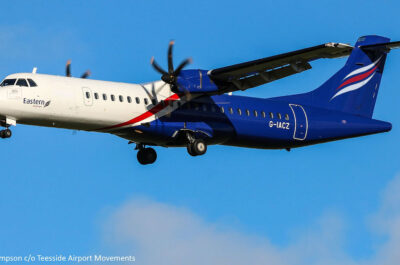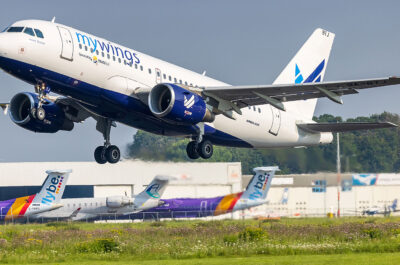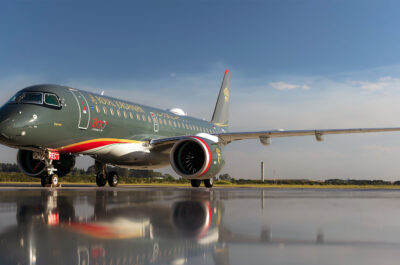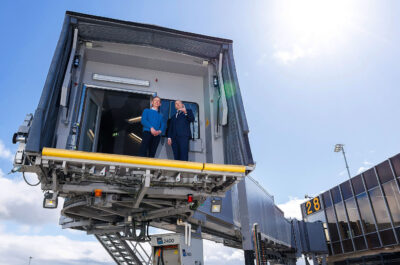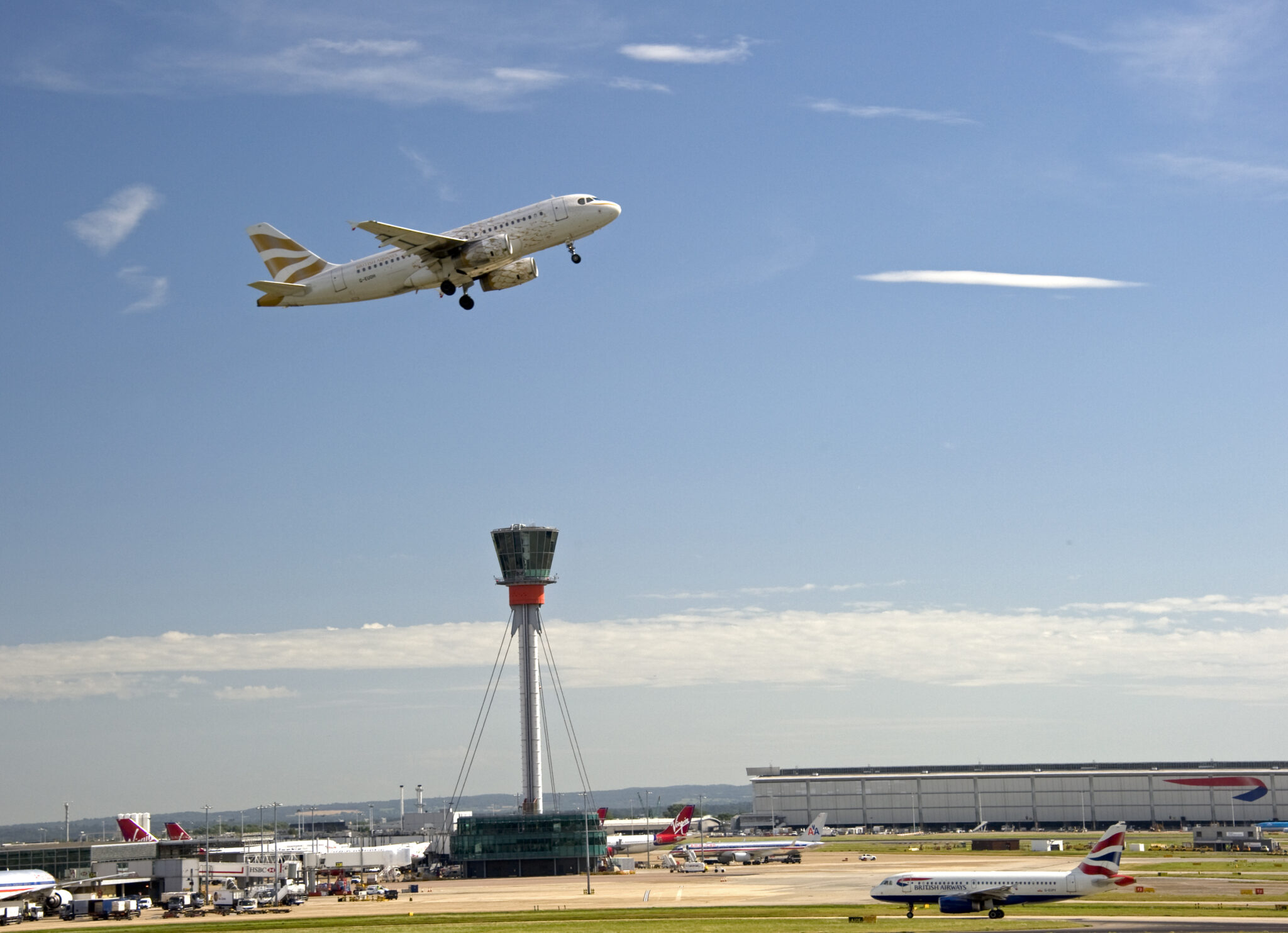
Demand remains bullish – despite airlines setting fares more than 6 times higher than consumer inflation rate.
BRUSSELS – The air traffic report for April 2023 released today by European airport trade body ACI Europe shows passenger traffic made further gains towards a full recovery, but with wide performance divergence across the continent.
Passenger traffic in the European airport network grew by +21.1% in April compared to the same month last year. Considering that travel restrictions had largely been eased in Europe by that time last year, such increase is significant. As a result, when compared to pre-pandemic (April 2019) levels, volumes in April this year stood at -7.6% – a further improvement over the preceding months (Q1 was at -10.6%).
Olivier Jankovec, Director General of ACI Europe said: “April has brought us closest ever to a full recovery for passenger traffic. The Easter holidays boosted demand, which clearly kept defying inflationary pressures. This is quite remarkable when the increase in air fares is more than 6 times above consumer price inflation1.”
“Yet, not all airports benefitted to the same extent. Performance variations remained significant across both national and individual airport markets – with only 47% of Europe’s airports having fully recovered their pre-pandemic passenger volumes. This reflects established recovery patterns, notably the prominence of leisure & VFR demand, the expansion of ultra-Low Cost Carriers and tight capacity management from most other airlines. Along with strikes, the fallout of the conflict in Ukraine and – last but not least – increased airport competition, these factors all combined to shape the traffic fortunes of airports across Europe.”
Performance variations across national markets
EU+ airports2 saw passenger traffic increase by +19.1% in April compared to the same month last year – resulting in volumes being -8.1% below their pre-pandemic (April 2019) levels.
- Airports in Iceland (+14.5%), Cyprus (+11.9%), Greece (+11%) Portugal (+10.7%), Bulgaria (+8.7%) and Malta (+8.4%) well exceeded their pre-pandemic volumes and posted the best results.
- Conversely, those in Slovenia (-39.8%), Germany (-26.1%), Slovakia (-25,9%) and the Czech Republic (-23.7%) remained the farthest from a full recovery.
- The performance of the largest markets reflected the leisure-driven nature of the recovery and the increasing market penetration of ultra-Low Cost Carriers – with airports in Spain (+2.7%) and Italy (+1%) achieving a full recovery, followed by those in the UK (-9.3%), France (-12.8%) and – as mentioned above – Germany.
At airports in the rest of Europe3, passenger traffic grew by +35.3% in April compared to the same month last year, resulting in volumes being just -4.1% below pre-pandemic (April 2019) levels.
While airports in Ukraine (-100%) lost all passenger traffic and those in Moldova (-19.9%) were also impacted by the conflict, airports in Russia (-2.8%) were close to their pre-pandemic volumes due to demand shifting to domestic and non-EU+ markets. This kept boosting the performance of airports in Armenia (+95.1%), Uzbekistan (+75.4%) and Serbia (+24.2%).
Airports in Turkey (-1.5%) nearly recovered their pre-pandemic volumes, while those in Albania (+115.8%), Kosovo (+53.7%) and North Macedonia (+21.7%) achieved impressive growth.
Majors still below pre-pandemic levels
Passenger traffic at the Majors (top 5 European airports in 20194) grew by +23.4% in April compared to the same month last year – slightly above the average growth rates of other segments of the airport industry. However, volumes still remained -9.8% below pre-pandemic (April 2019) levels due to lower hub carrier capacity deployment and the subdued impact of the re-opening of China.
London-Heathrow led the current top 5 European airport league in April, welcoming 6.4 million passengers. This represented an increase of +25.9% over the same month last year and a decrease of -5.9% when compared to pre-pandemic (April 2019) levels.
Istanbul came second with its passenger traffic at +34.3% over April 2022 and an impressive +10.8% over pre-pandemic levels. The Turkish hub was followed by Paris-CDG (+19.3% over April 2022 | -15.5% over pre-pandemic), Amsterdam-Schiphol (+15.6% over April 2022 | -16% over pre-pandemic) and Madrid (+20.6% over April 2019 | -3.5% over pre-pandemic).
Amongst other large airports5 and when compared to pre-pandemic levels, the best performance came from those airports relying on leisure/VFR demand and/or Low Cost Carrier traffic: Lisbon (+5.6%), Dublin (+0.9%), Palma de Mallorca (+8.7%), Athens (+7.6%) and Tel Aviv (+2.4%).
Ultra-LCC bases an regional/smaller airports outperforming
These same recovery drivers kept boosting a number of large ultra-Low Cost airport bases, which far exceeded their pre-pandemic passenger traffic volumes: Beauvais (+40.8%), Bergamo (+17.2%) and Charleroi (+11.2%).
They also benefitted regional and smaller airports6 which on average saw passenger traffic just above pre-pandemic levels at +1.6%. Those serving popular tourist destinations and/or relying on LCC traffic posted the best results – such as Trapani (+304.6%), Memmingen (+54.7%), Varna (+54.4%), Reus (+43%), Funchal (+38.7%), Menorca (+37.7%), Turin (+23%), Palermo (+20.2%) and Kaunas (+20.1%).
Aircraft movements
Aircraft movements increased by +11% across the European airport network compared to the same month last year, and stood at -9.9% compared to pre-pandemic levels.
Data by airport groups
During the month of April, airports welcoming more than 25 million passengers per year (Group 1), airports welcoming between 10 and 25 million passengers (Group 2), airports welcoming between 5 and 10 million passengers (Group 3) and airports welcoming less than 5 million passengers per year (Group 4) reported an average adjustment of -10.3%, -6.6%, +1.7% and +1.5%, as compared to pre-pandemic traffic levels (April 2019).
The airports that reported the highest increases in passenger traffic for April 2023 when compared with April 2022 are as follows:
- Group 1: Istanbul IST (+10.8%), Palma de Mallorca (+8.7%), Athens (+7.6%), Lisbon (+5.6%) and Dublin (+0.9%).
- Group 2: Porto (+17.6%), Milan BGY (+17.2%), Naples (+15.8%), Málaga (+10.9%) and Tenerife TFS (+9%).
- Group 3: Sochi (+95.2%), Rhodes (+39.3%), Ibiza (+28.4%), Belgrade (+23.9%), and Palermo (+20.2%)
- Group 4: Tirana (+115.8%), Yerevan (+95.1%), Memmingen (+54.7%), Varna (+54.4%) and Pristina (+53.7%).
1 The consumer price inflation rate in the eurozone stood at +6% in May 2023, whereas air fares in Europe for the same month were running at +36%
(sources: www.ec.europa.eu/eurostat/web/products-euro-indicators/w/2-01062023-AP | www.rdcaviation.com/products/apex/).
2 EU, EEA, Switzerland and UK.
3 Albania, Armenia, Belarus, Bosnia & Herzegovina, Georgia, Israel, Kazakhstan, Kosovo, Northern Macedonia, Moldova, Montenegro, Russia, Serbia, Turkey, Ukraine and Uzbekistan.
4 London‑Heathrow, Istanbul, Paris‑CDG, Amsterdam‑Schiphol and Frankfurt.
5 Airports with more than 25 million passengers per annum (2019).
6 Airports with less than 10 million passengers per annum (2019).
Tatiana is the news coordinator for TravelDailyNews Media Network (traveldailynews.gr, traveldailynews.com and traveldailynews.asia). Her role includes monitoring the hundreds of news sources of TravelDailyNews Media Network and skimming the most important according to our strategy.
She holds a Bachelor's degree in Communication & Mass Media from Panteion University of Political & Social Studies of Athens and she has been editor and editor-in-chief in various economic magazines and newspapers.

































